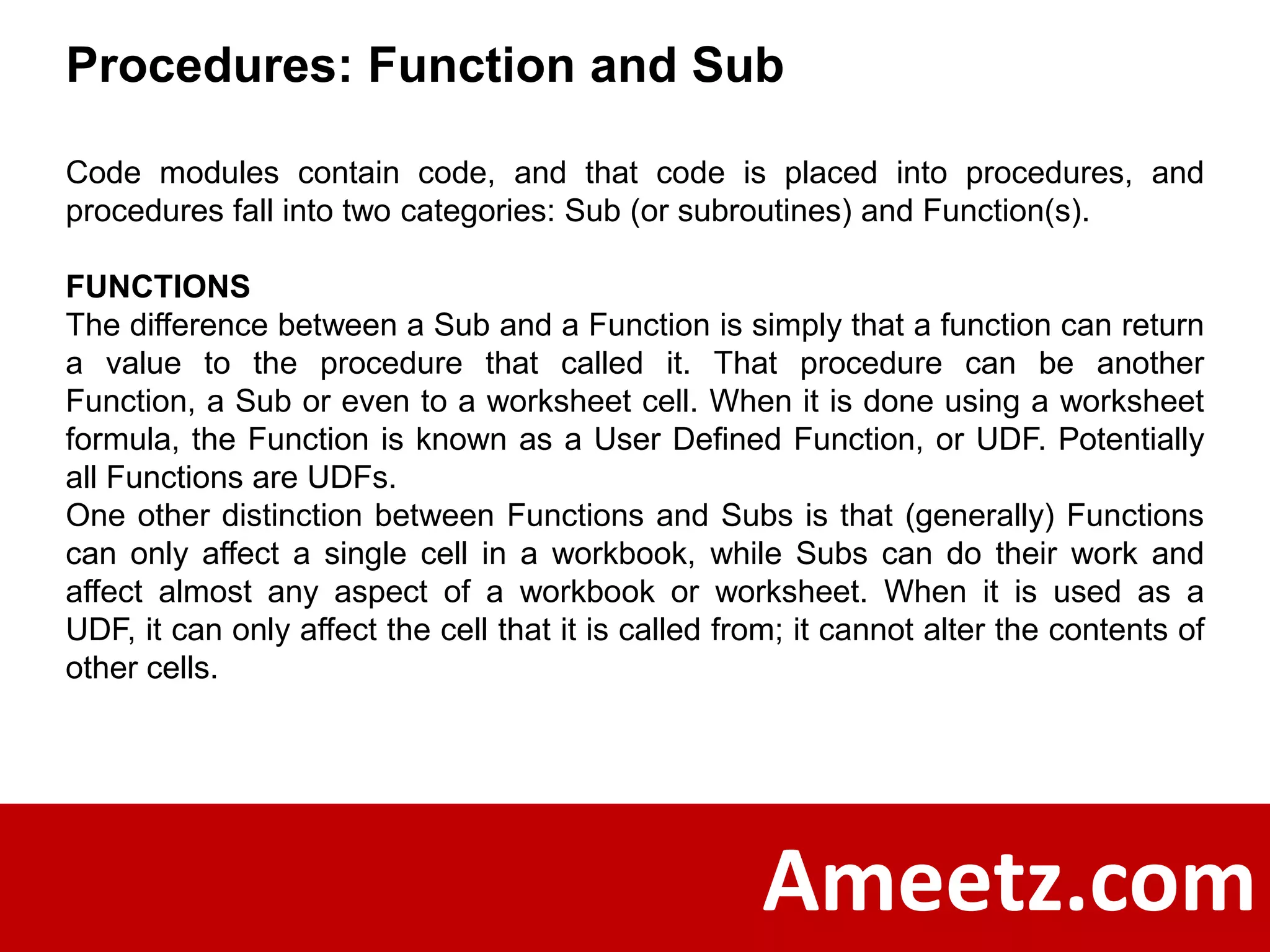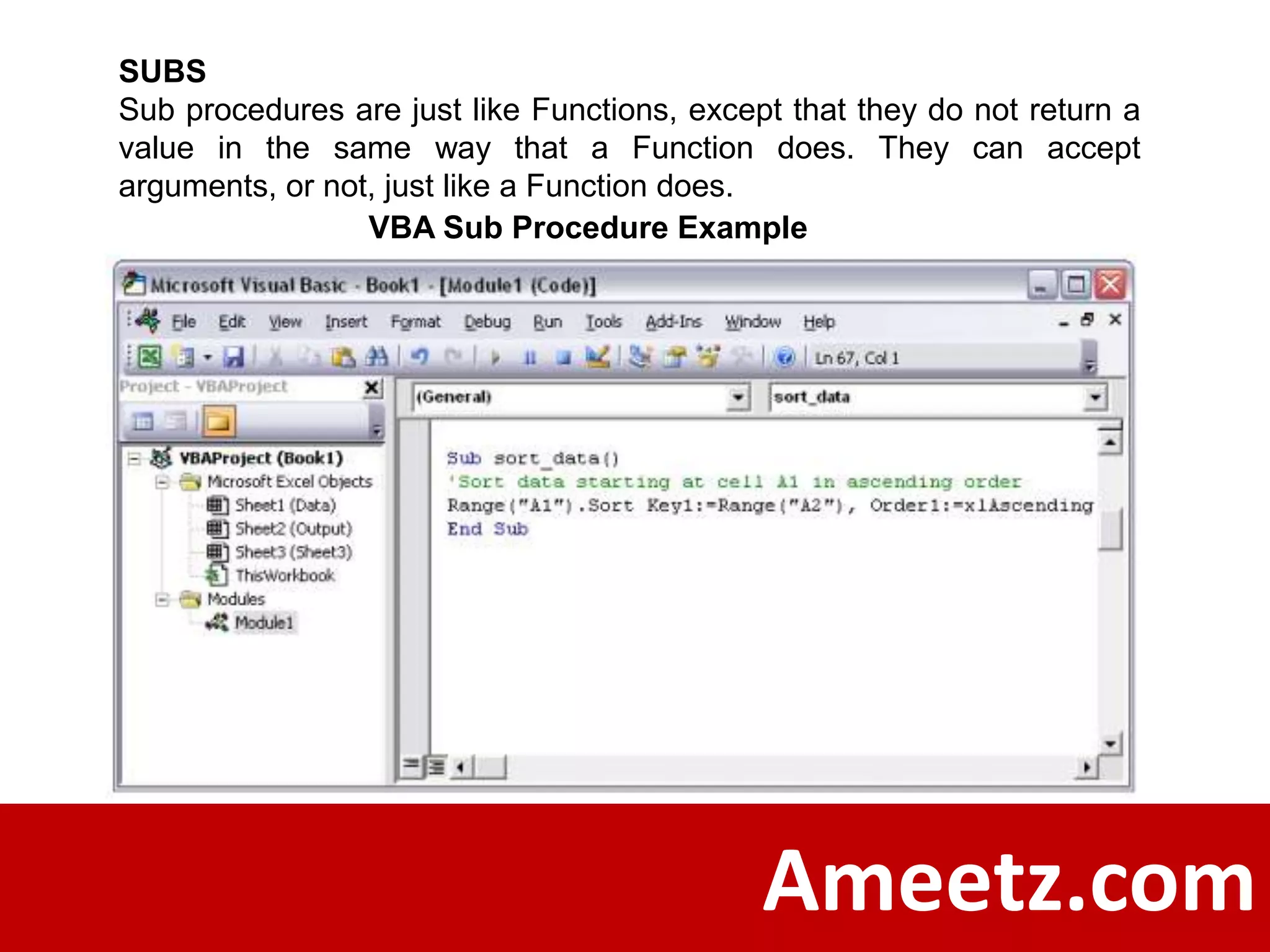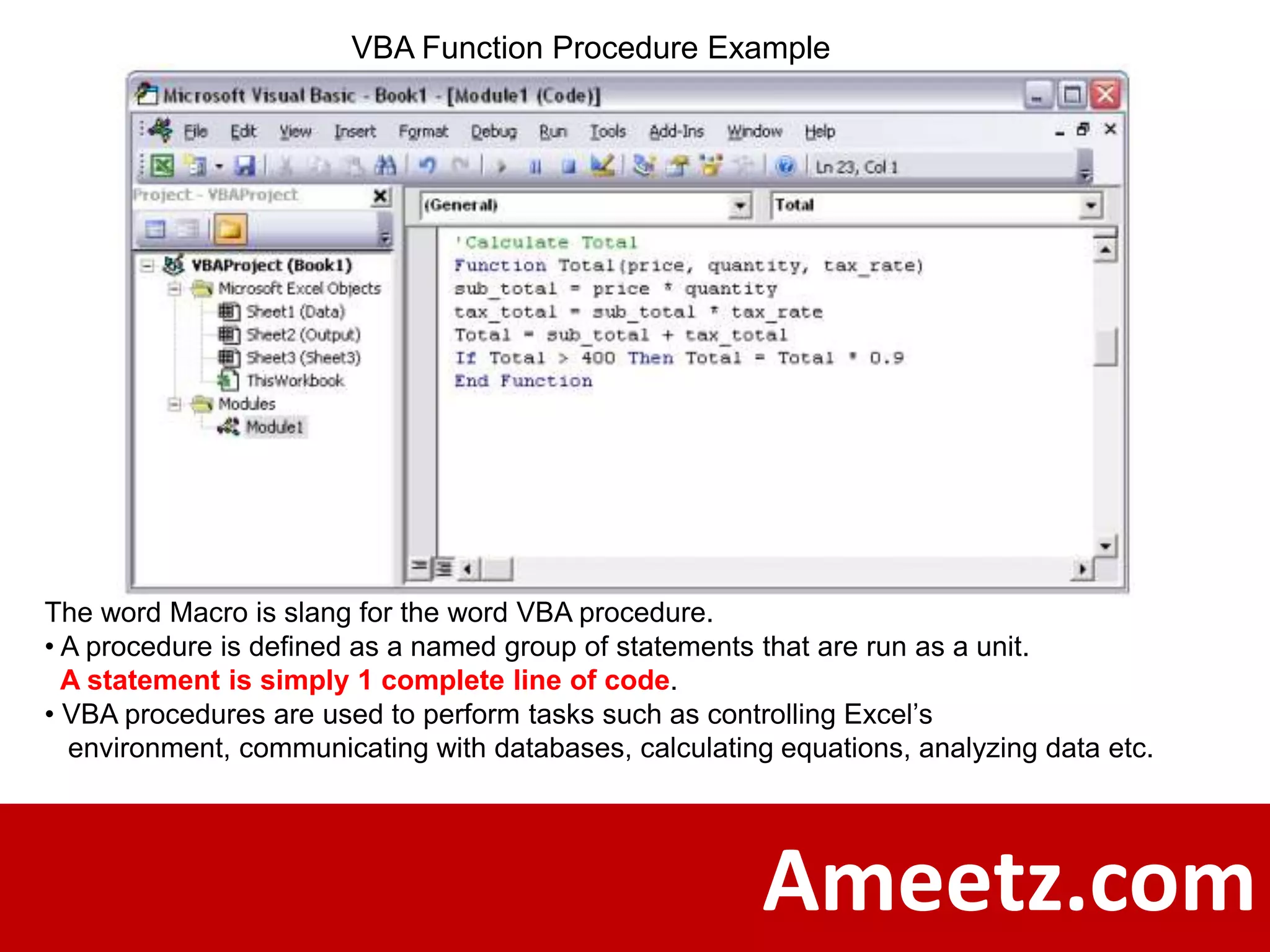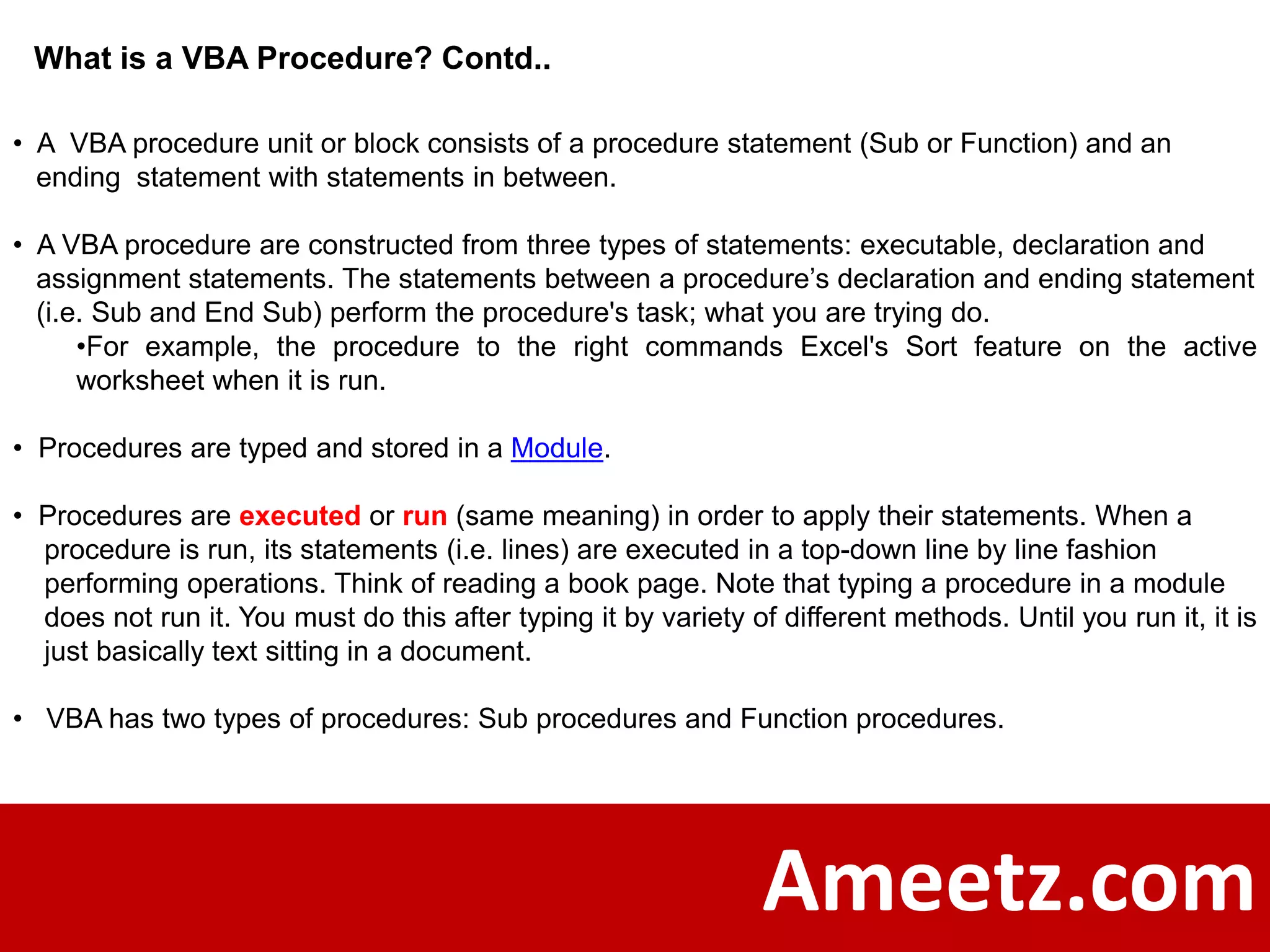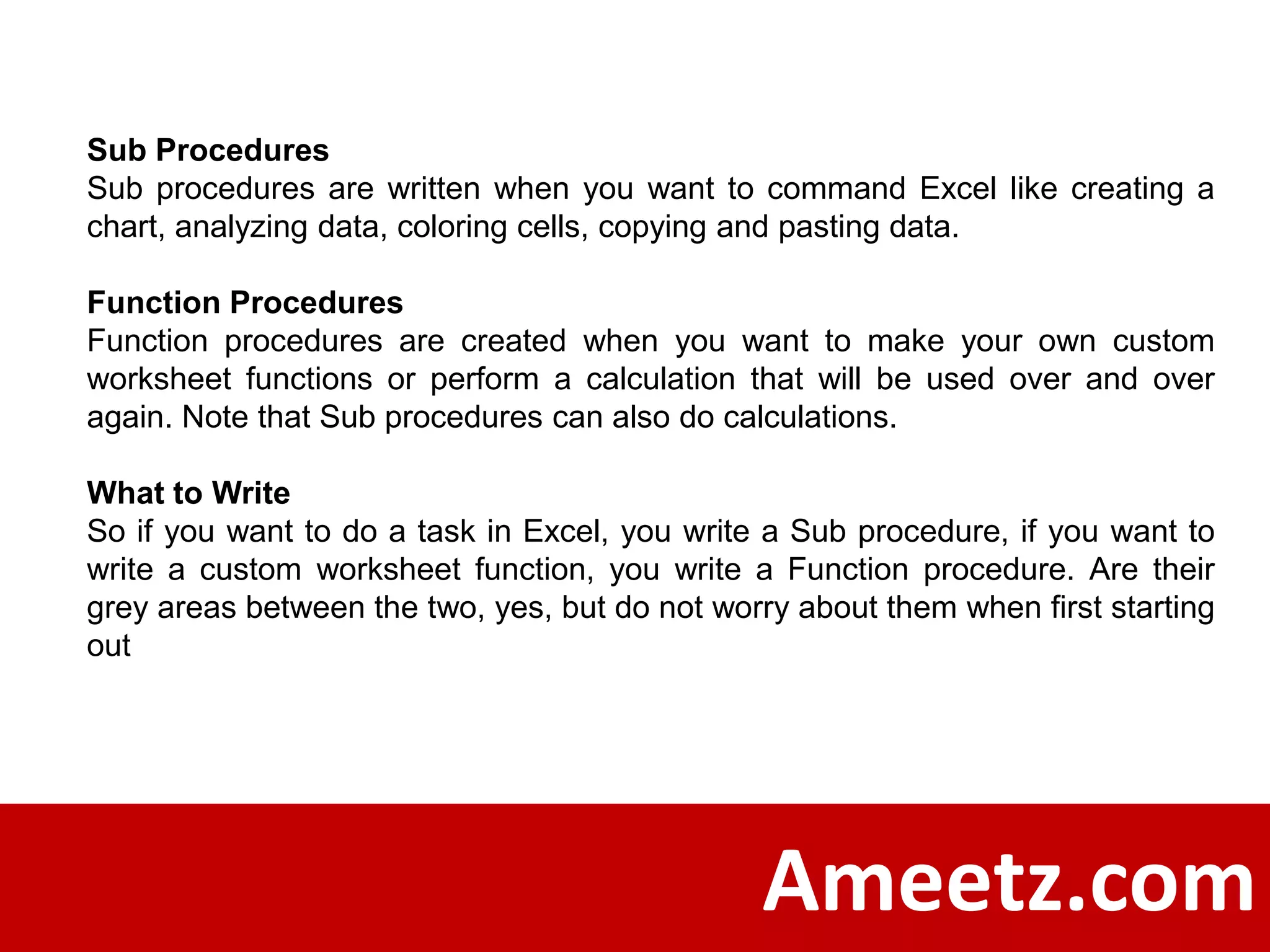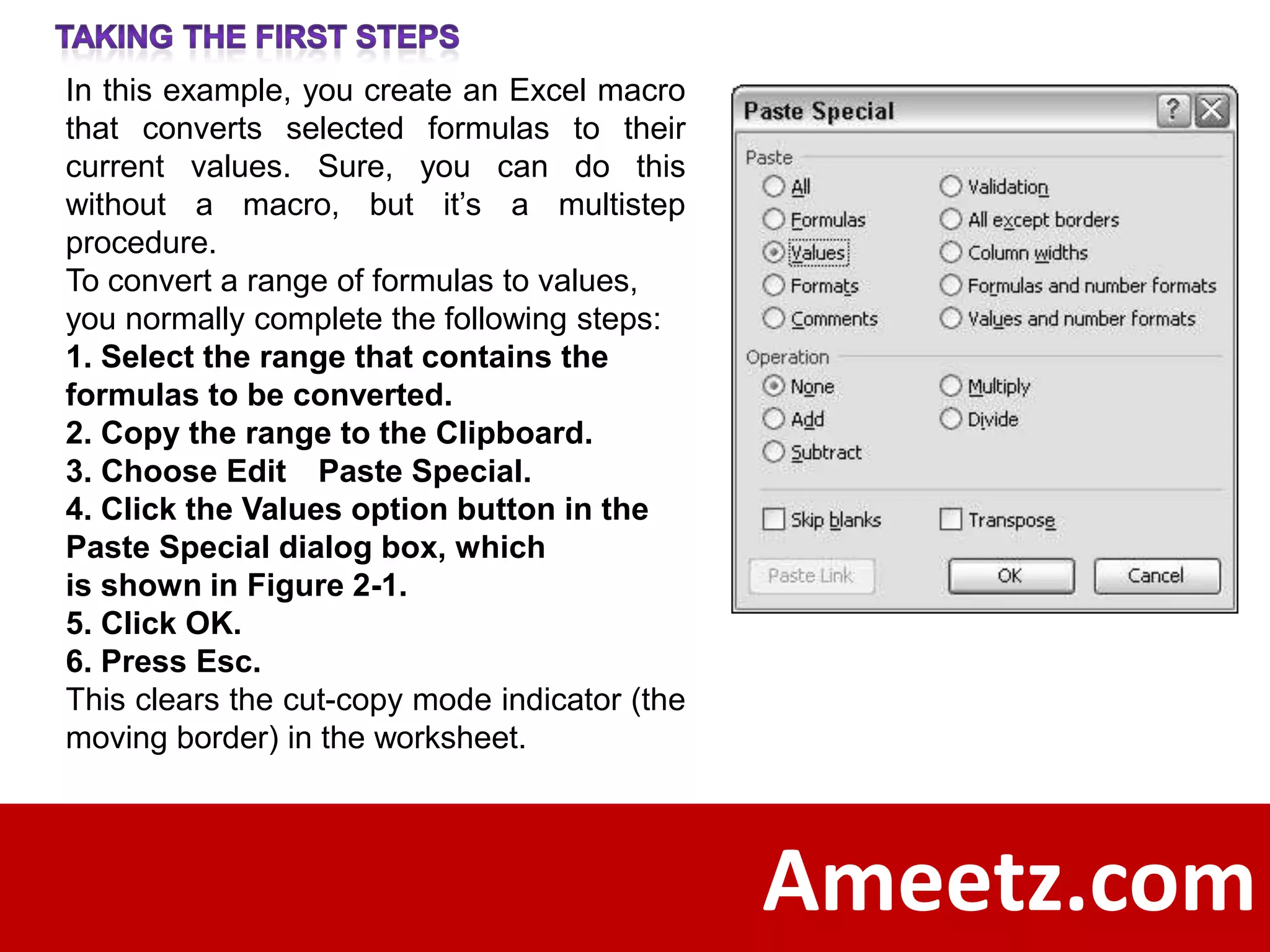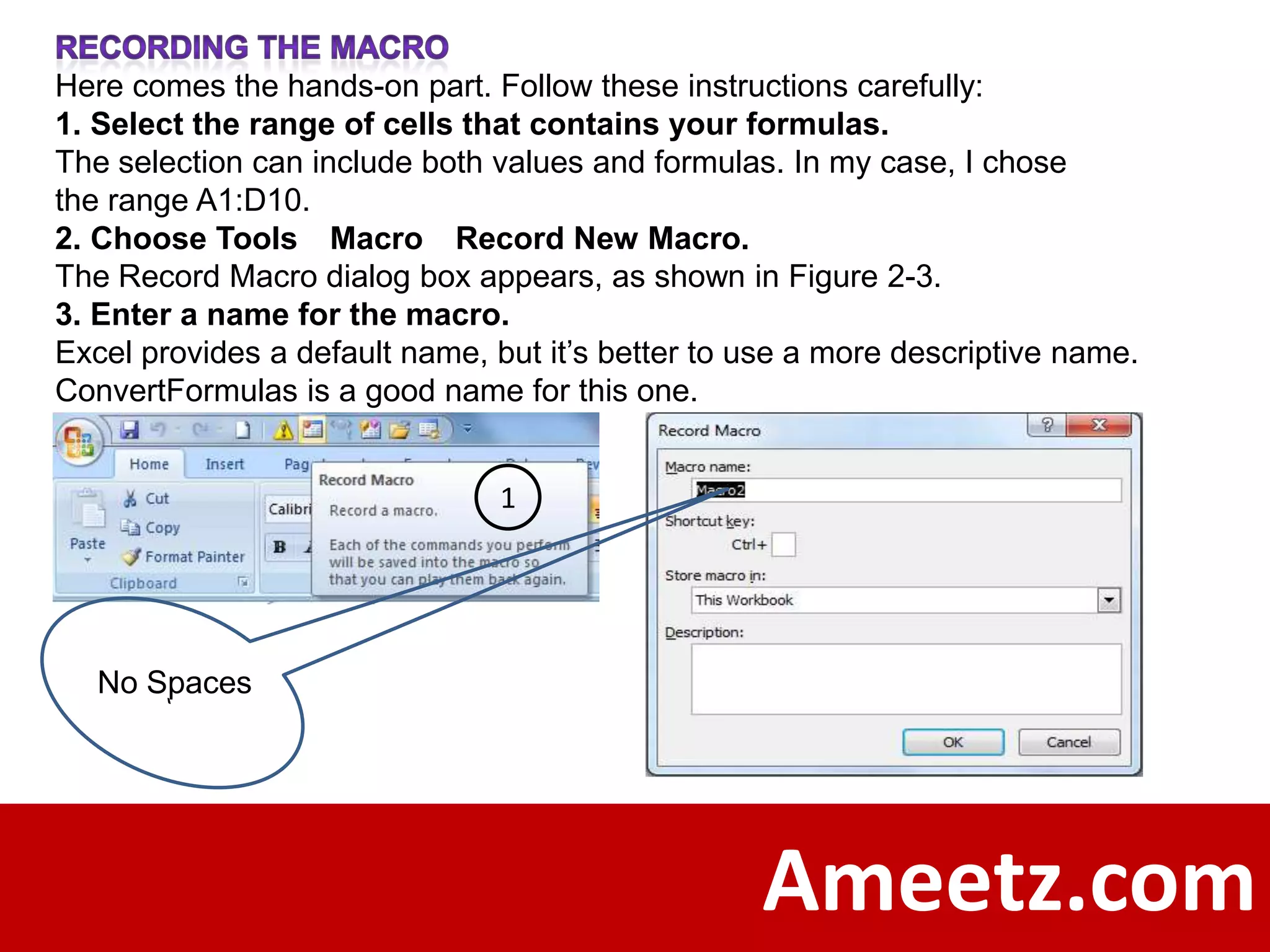The document covers key concepts in VBA (Visual Basic for Applications), including its event-driven and object-based nature, use of the IDE, and creation of various types of modules. It explains workbook and worksheet event handling, the significance of `Sub` and `Function` procedures, and how to structure and execute VBA procedures. Additionally, practical examples such as converting formulas to values using macros are provided for better understanding.
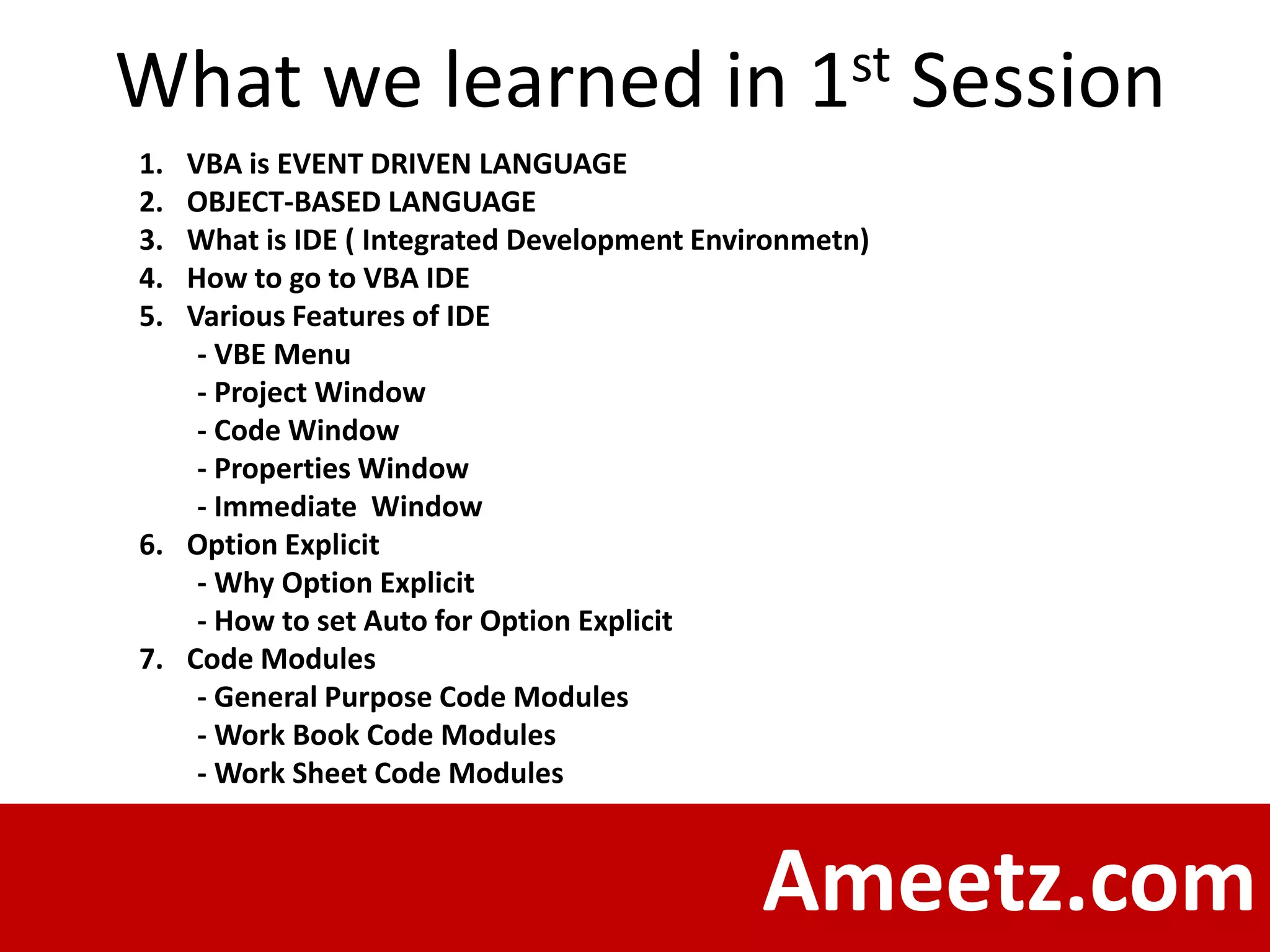
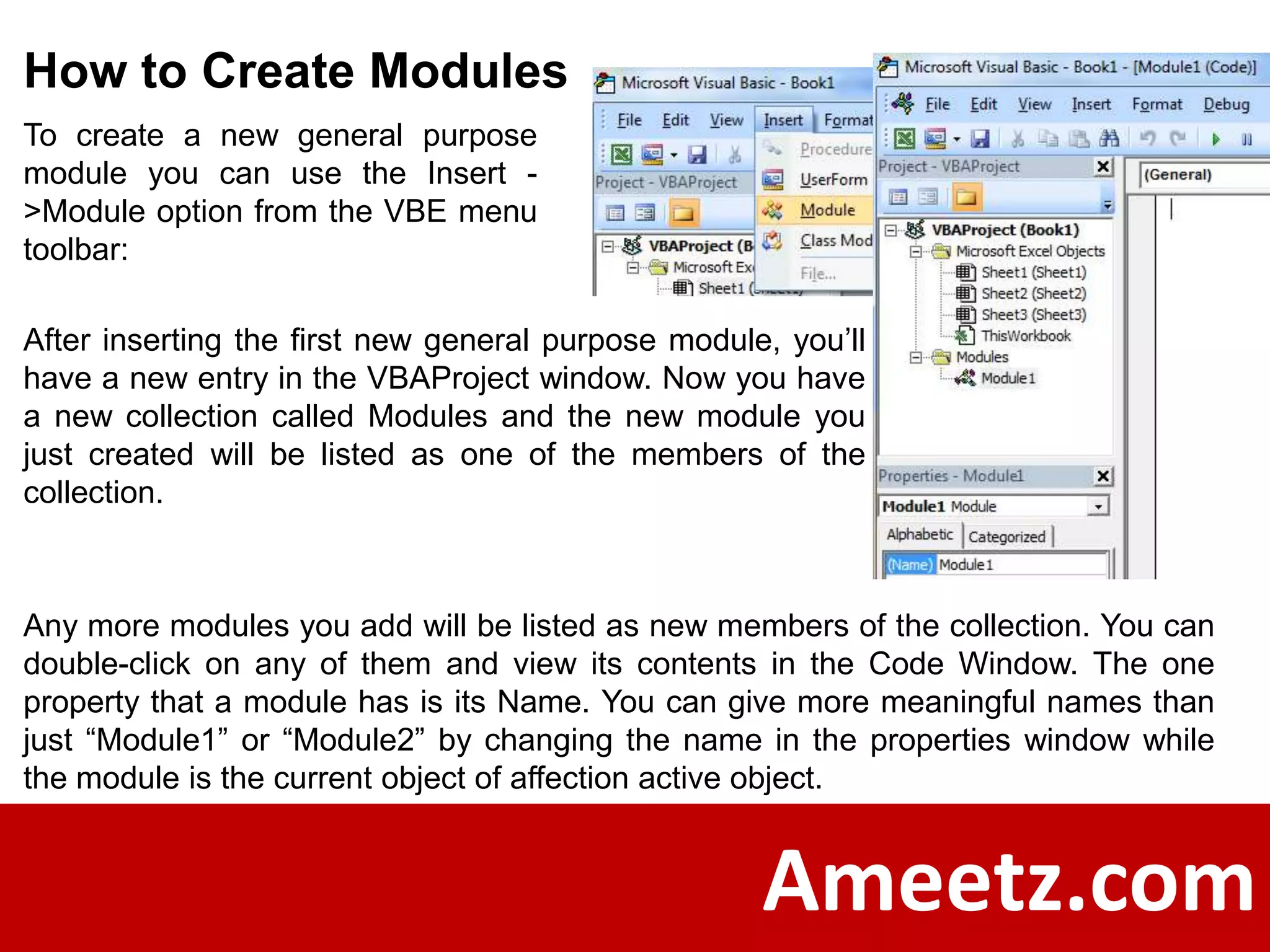


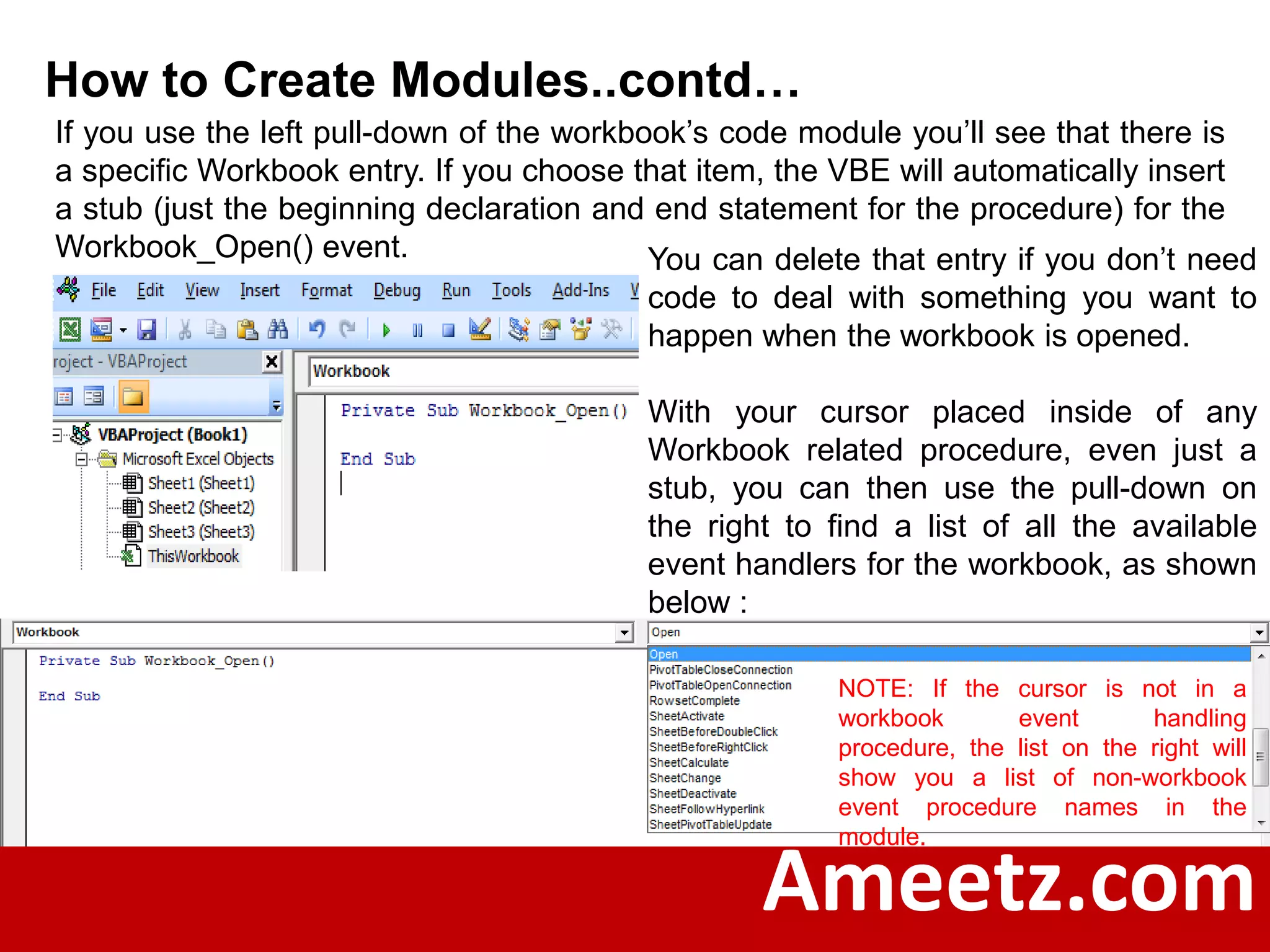
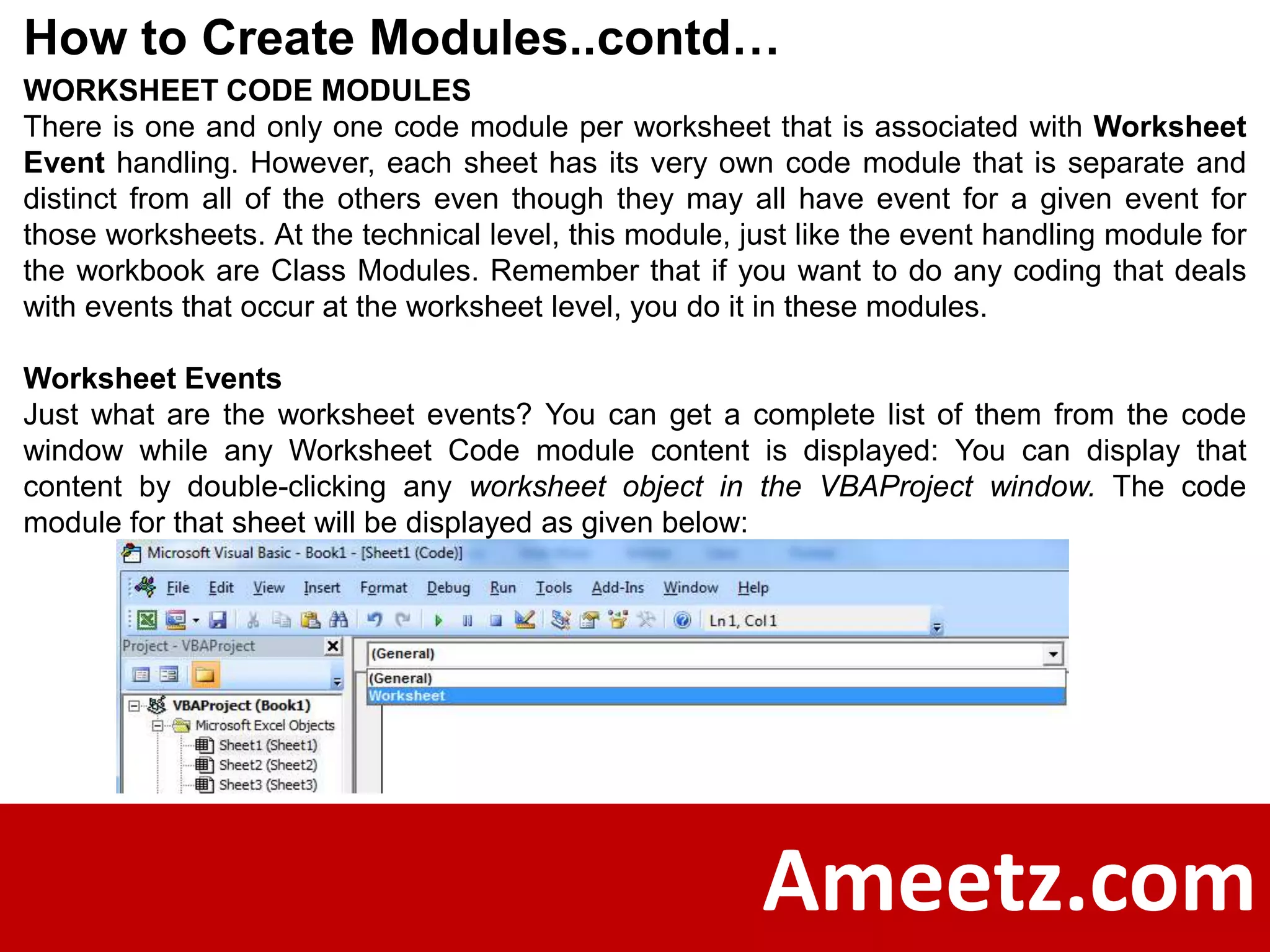
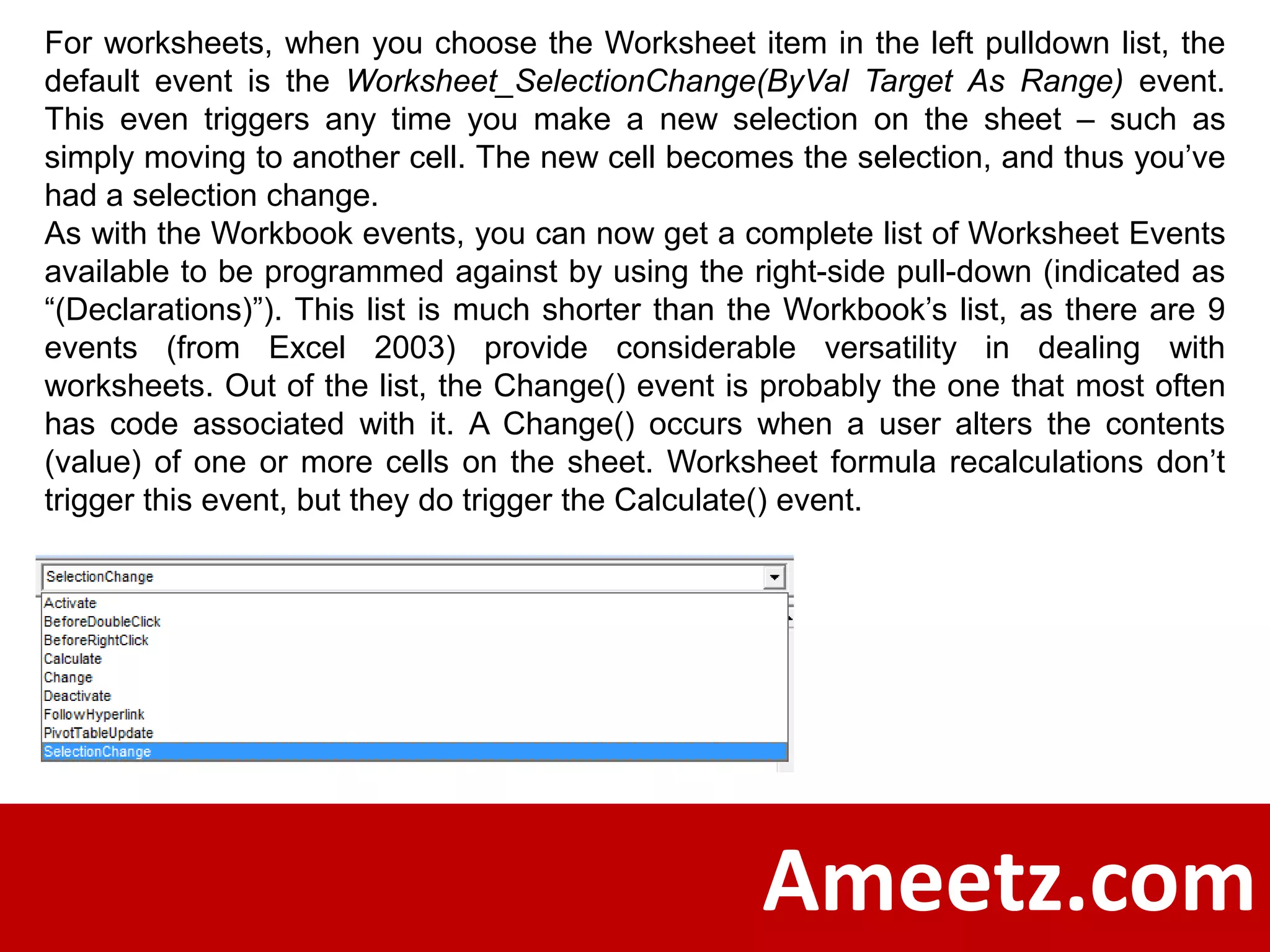
![The ‘Target’ and ‘Cancel’ Objects Often in worksheet event stubs provided by the VBE you will see reference to two special objects (sometimes more or others also): Cancel and/or Target. Target represents the Range [which is an object that represents a single cell, a group of cells, one or more rows and/or one or more columns] that is active at the time the event took place. Think of Target as the actual object itself. Anything you do to Target is done to the actual Range that it represents. Changes made to Target will appear on the sheet itself. The Cancel object is a Boolean type object. A Boolean object can only have one of two conditions assigned to it: TRUE or FALSE. By default a Boolean object is FALSE (and has a numeric value of zero). If your code sets Cancel = TRUE then the underlying event action is cancelled: the DoubleClick never takes place or the RightClick never gets completed. These are handy events to use to take very special actions with – you can have someone double-click in a cell (and set Cancel = True) to begin a series of events unique to that cell. A real world example of this type of thing in one application I developed is that in a data area matrix that has dates in the top row, a double-click on a date causes all rows with an empty cell in that column to become hidden: a kind of auto filter based on empty cells for that one column. Ameetz.com](https://image.slidesharecdn.com/e-learningexcelvbaprogramminglesson2-120111041631-phpapp01/75/E-learning-excel-vba-programming-lesson-2-8-2048.jpg)
